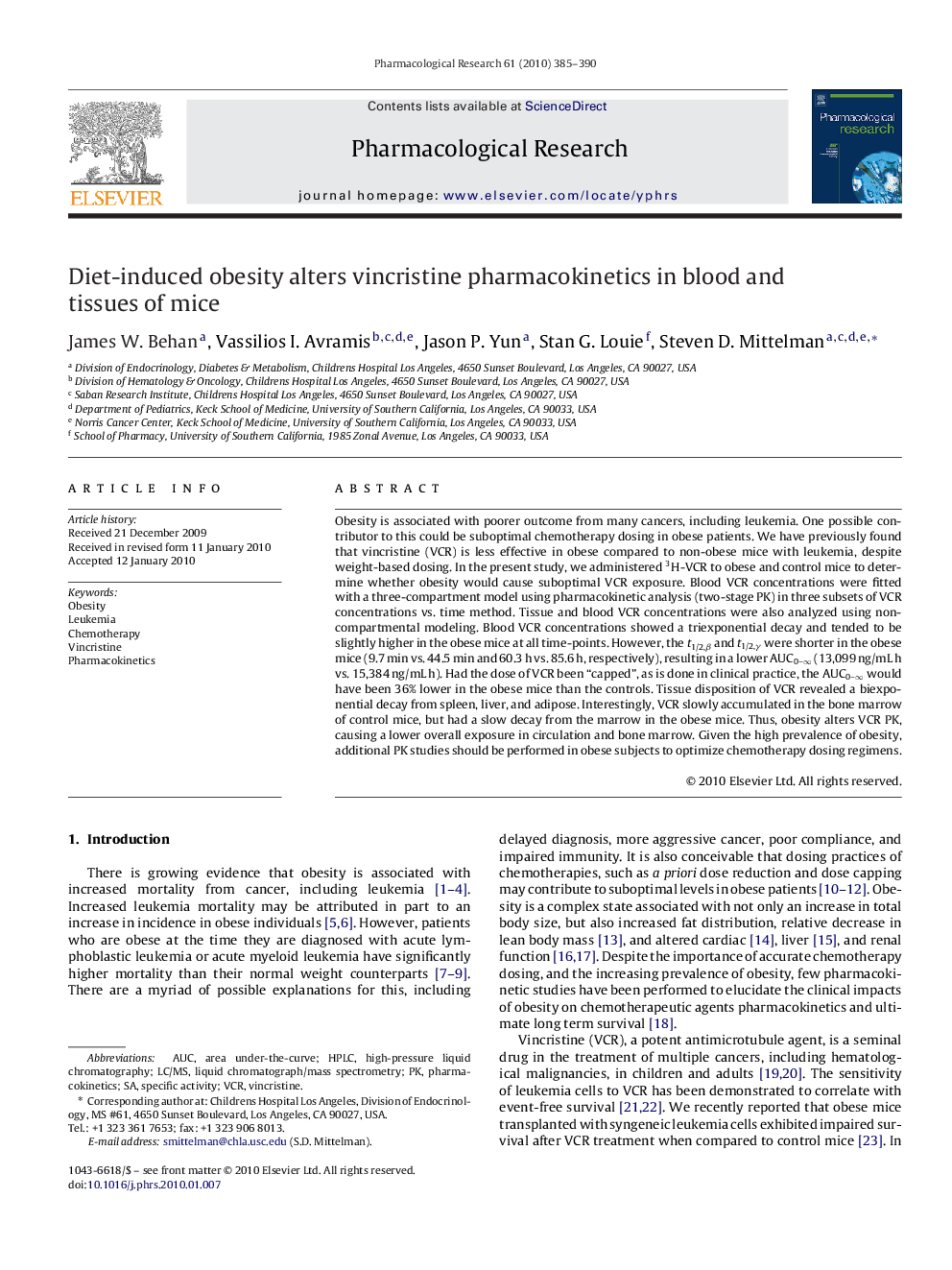| Article ID | Journal | Published Year | Pages | File Type |
|---|---|---|---|---|
| 2561706 | Pharmacological Research | 2010 | 6 Pages |
Abstract
Obesity is associated with poorer outcome from many cancers, including leukemia. One possible contributor to this could be suboptimal chemotherapy dosing in obese patients. We have previously found that vincristine (VCR) is less effective in obese compared to non-obese mice with leukemia, despite weight-based dosing. In the present study, we administered 3H-VCR to obese and control mice to determine whether obesity would cause suboptimal VCR exposure. Blood VCR concentrations were fitted with a three-compartment model using pharmacokinetic analysis (two-stage PK) in three subsets of VCR concentrations vs. time method. Tissue and blood VCR concentrations were also analyzed using non-compartmental modeling. Blood VCR concentrations showed a triexponential decay and tended to be slightly higher in the obese mice at all time-points. However, the t1/2,β and t1/2,γ were shorter in the obese mice (9.7 min vs. 44.5 min and 60.3 h vs. 85.6 h, respectively), resulting in a lower AUC0-â (13,099 ng/mL h vs. 15,384 ng/mL h). Had the dose of VCR been “capped”, as is done in clinical practice, the AUC0-â would have been 36% lower in the obese mice than the controls. Tissue disposition of VCR revealed a biexponential decay from spleen, liver, and adipose. Interestingly, VCR slowly accumulated in the bone marrow of control mice, but had a slow decay from the marrow in the obese mice. Thus, obesity alters VCR PK, causing a lower overall exposure in circulation and bone marrow. Given the high prevalence of obesity, additional PK studies should be performed in obese subjects to optimize chemotherapy dosing regimens.
Related Topics
Health Sciences
Pharmacology, Toxicology and Pharmaceutical Science
Pharmacology
Authors
James W. Behan, Vassilios I. Avramis, Jason P. Yun, Stan G. Louie, Steven D. Mittelman,
